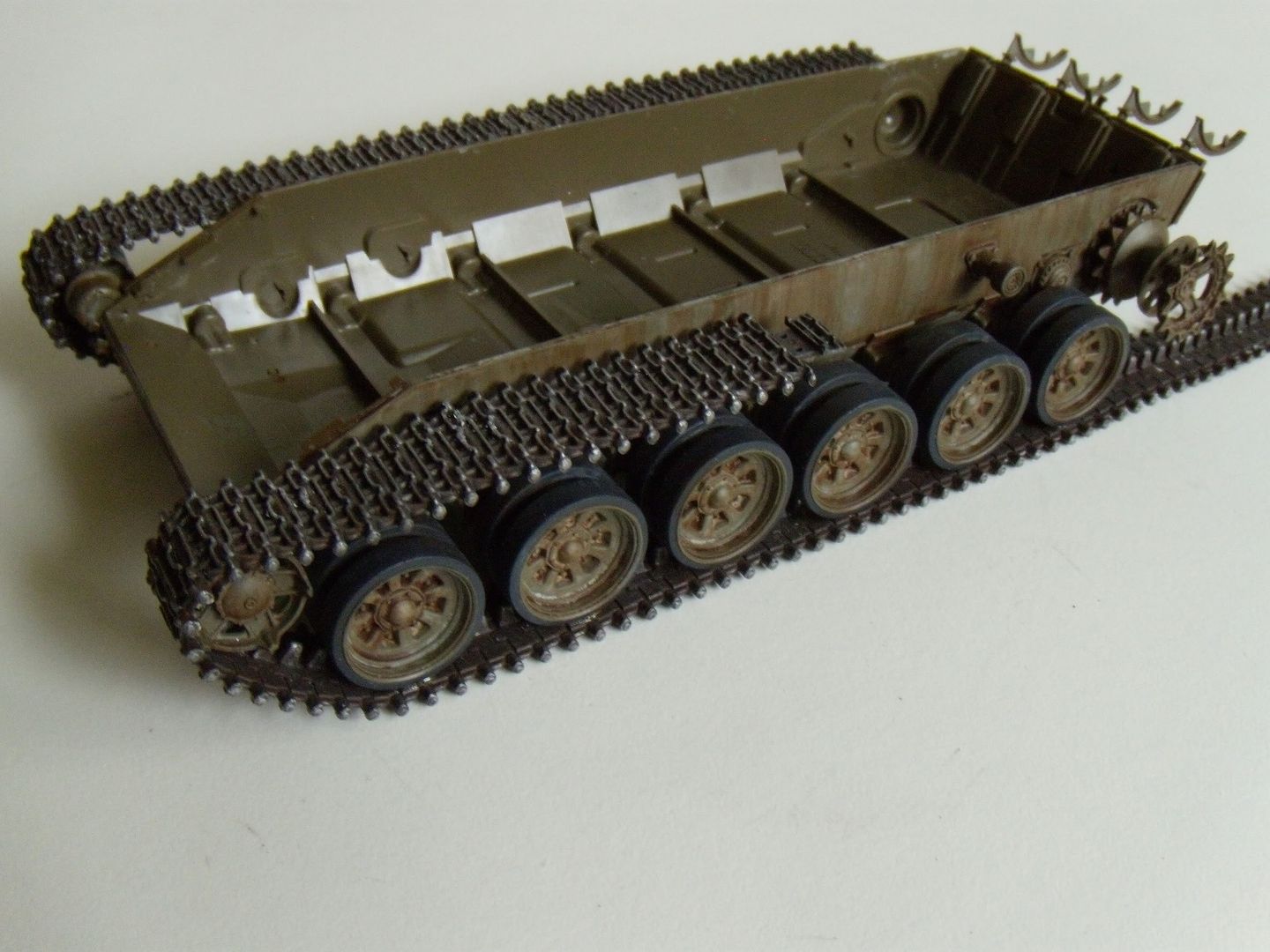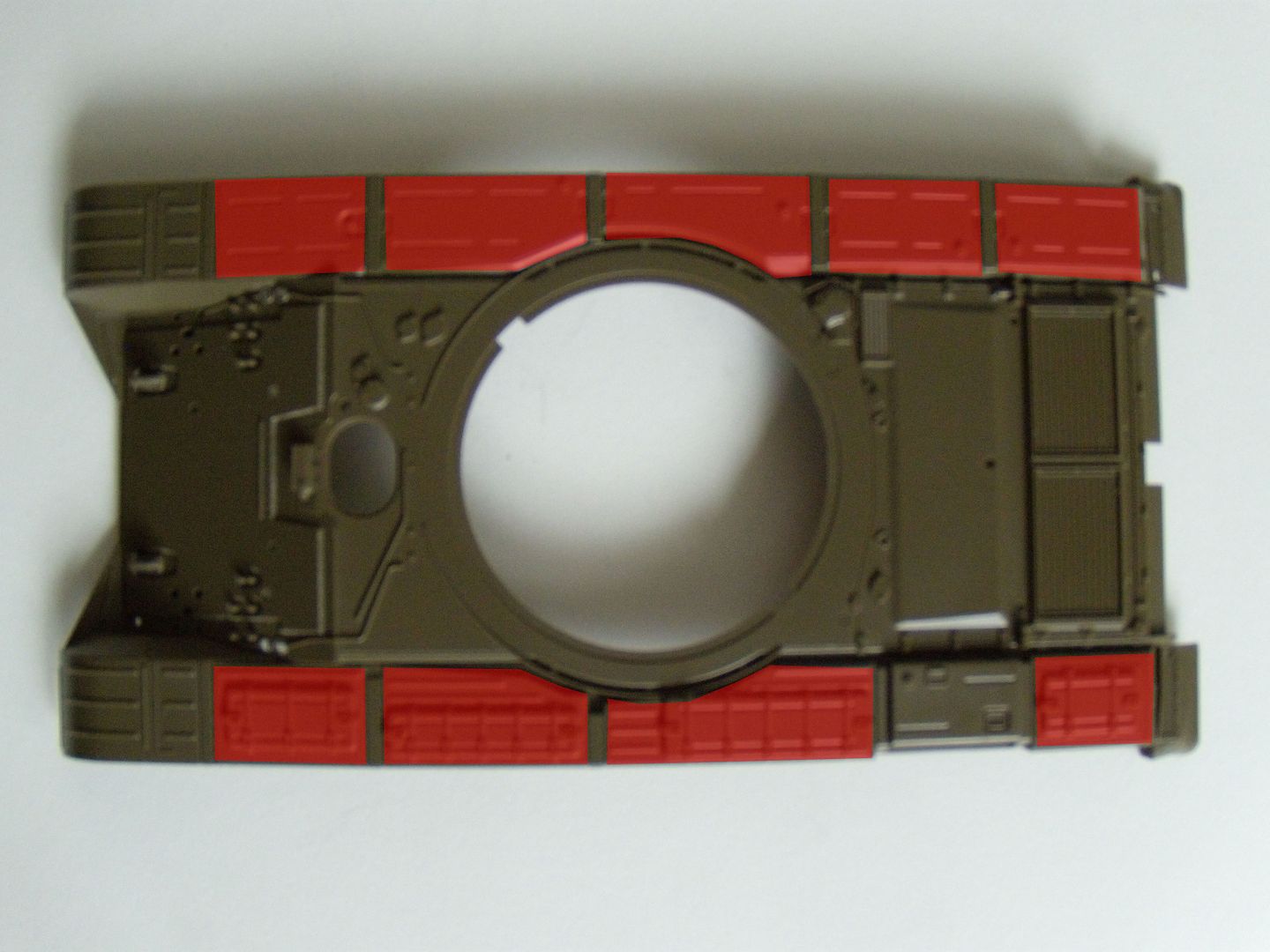Yikes, my last update was last year. Didn't realize it's been that long, nevertheless here's an update that's been much delayed and long awaited. Tracks are all finished up, primed first then painted in my standard Tamiya acrylic flat earth, then washed in burnt umber, black, rust, and another burnt umber. Then drybrushed with two shades of darkened steel. The paint might have gone on well, but damn these rubberband tracks, as soon as you start moving them around the cracks and chips in the paint occur. It's nothing too serious, another wash can solve that problem, but these tracks are still very hellish.
Didn't realize it's been that long, nevertheless here's an update that's been much delayed and long awaited. Tracks are all finished up, primed first then painted in my standard Tamiya acrylic flat earth, then washed in burnt umber, black, rust, and another burnt umber. Then drybrushed with two shades of darkened steel. The paint might have gone on well, but damn these rubberband tracks, as soon as you start moving them around the cracks and chips in the paint occur. It's nothing too serious, another wash can solve that problem, but these tracks are still very hellish.

Rubberband tracks ease of assembly=yes(since your obviously not assembling indy links together), easy to attach ends together=NO. I didn't sew the ends, nor did I staple the ends, nor did I try to melt them together, I went the way of glue....to be exact super glue(for that instant bond) and Elmer's polyurethane glue(for that strong bond.) Even using this combination of glues didn't make it easy, I had to stretch and smash them to fit, surprisingly they stuck together(after holding the ends for about 10 minutes apiece). In the end the join area is not perfect(paint started coming apart) so now more repairs are necessary. Either way my final opinion is that I'm an indy-track lover.


Weathering on the lower hull came before the track assembly. I wanted something different that fit the environment of Afghanistan a bit more So I went lighter on the burnt umber then usual, but extremely heavy on grime.....for that dusty/dry appearance.

Upper hull is where the real work has to happen, the Tamiya T-72M1 kit is an eport version of a later model T-72. So I had to backdate the hull piece for what would likey have been seen in Afghanistan. Keep in mind all T-72's in the Soviet-Afghan War never saw combat, it was a vehicle strictly there for field testing, so that said most didn't venture far from home base at the capital. Keeping that in mind I decided to scrap all the storage containers on the fenders of one side, and I decided to remove most of the fuel tanks also on the fenders. (lacking foresight, I removed too many fuel tanks, not realizing the tank still needs fuel to work ) That means I now have to scratch two fuel tanks on the fenders, in addition to the fenders on both sides I already have planned.
) That means I now have to scratch two fuel tanks on the fenders, in addition to the fenders on both sides I already have planned.


After, the fenders I had to fix the frontal add-on armor. T-72's in Afghanistan wouldn't have had this much later added armor. So that obviously had to go, but replacing the whole front with resin aftermarket parts was not something I wanted to flip the bill for, nor was sanding the plate off a reasonable option, so I decided to hide it. Yes, hide it by using putty along all the edges. A lot of putty to make the lower plate and “add-on” seem like just one plate. A couple of hours of sanding later the result is not half-bad.

As always all comments, questions, and suggestions welcome. PS: if you got a pic of T-72’s in Afghanistan please share, because I’m still looking for one(though I think my chances are slim).